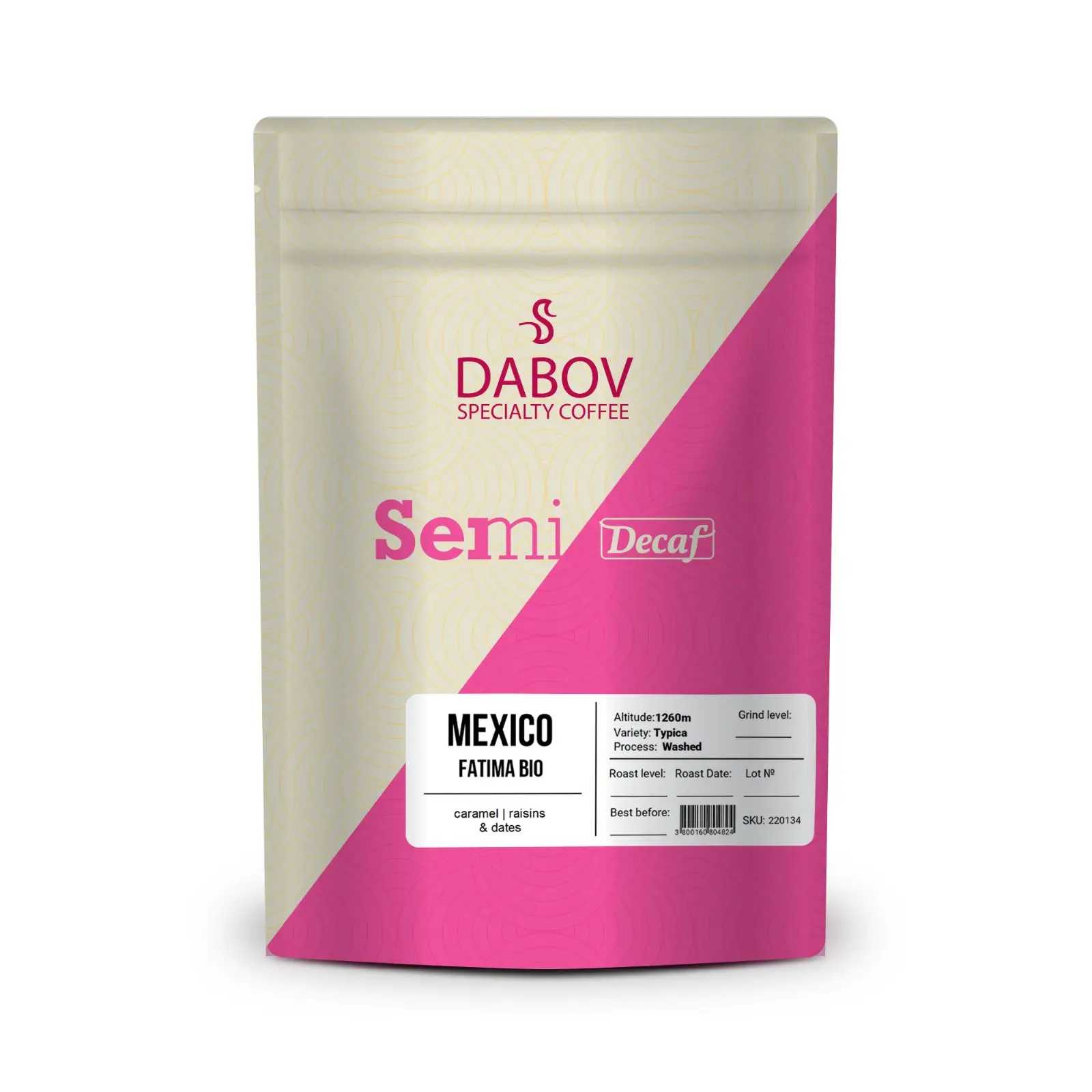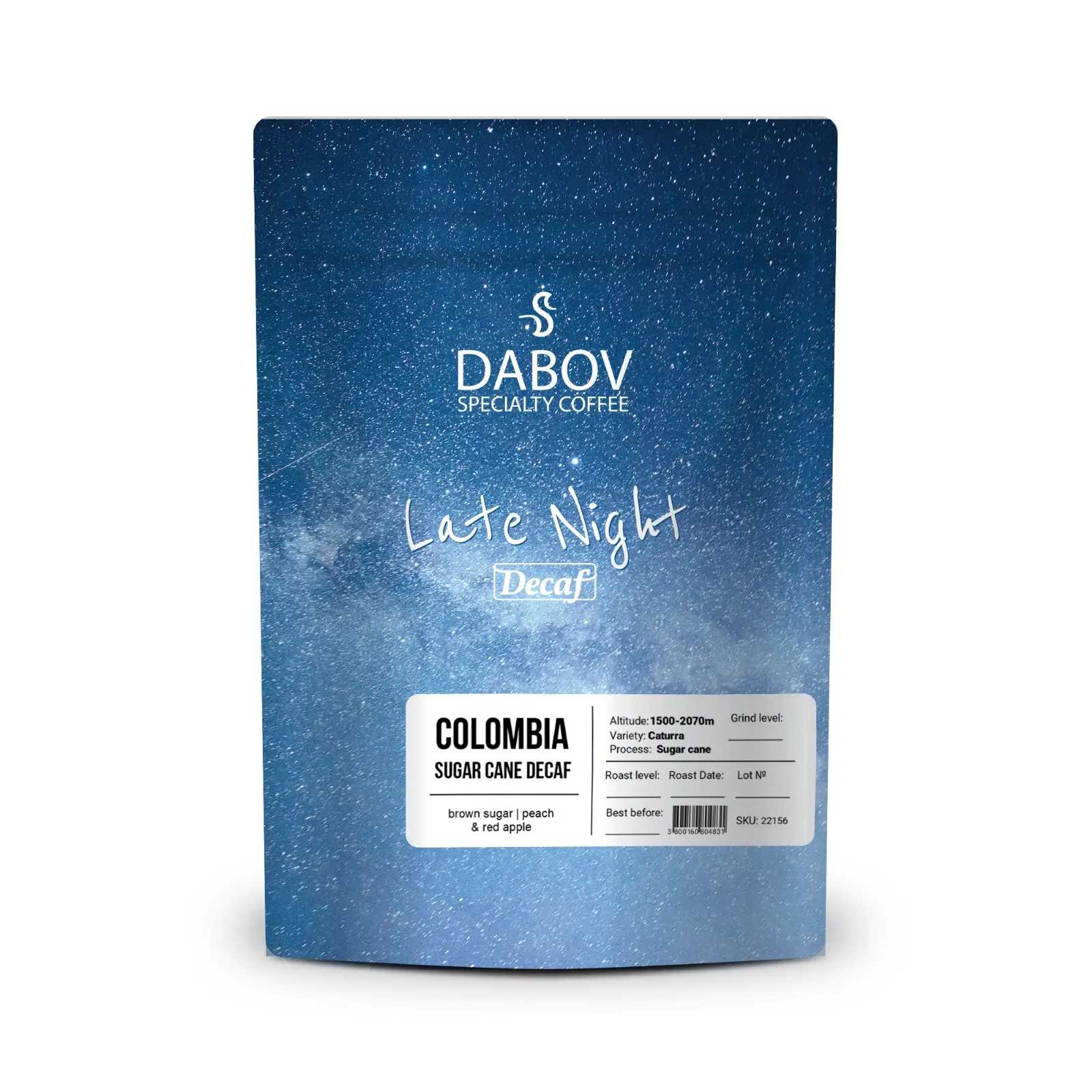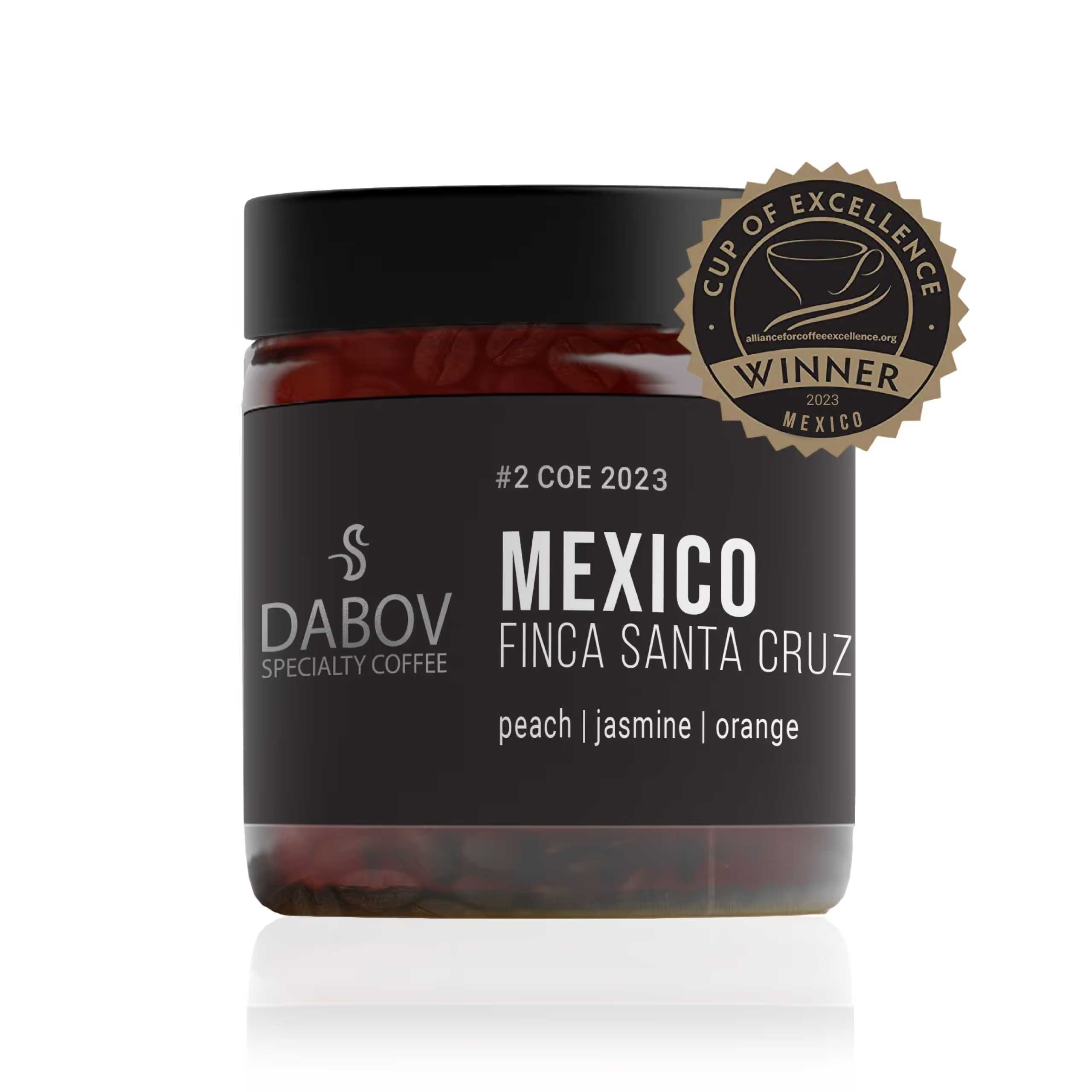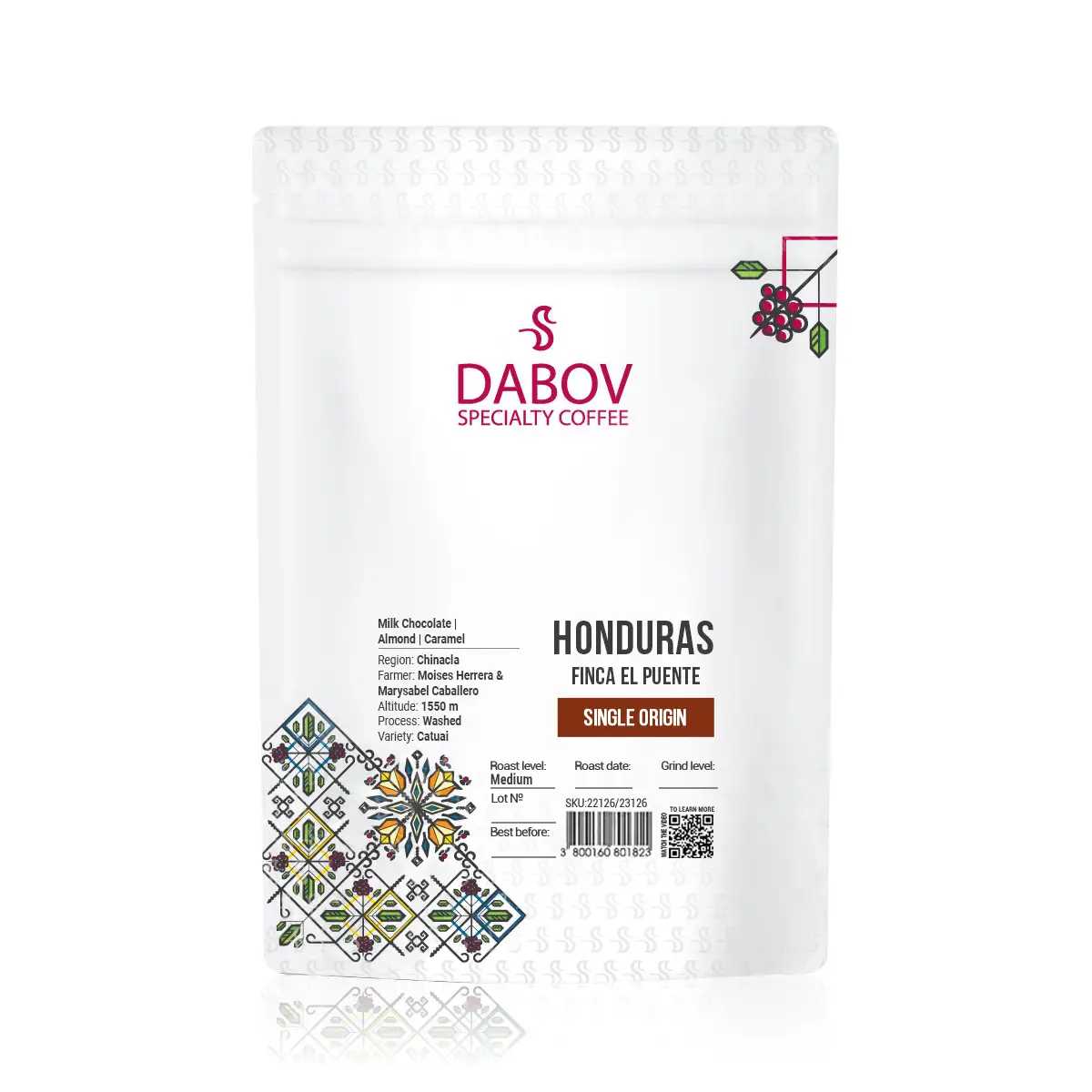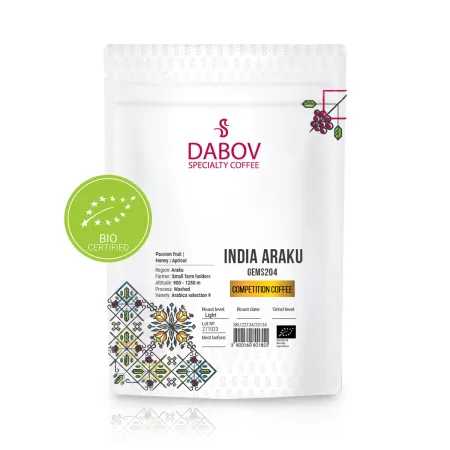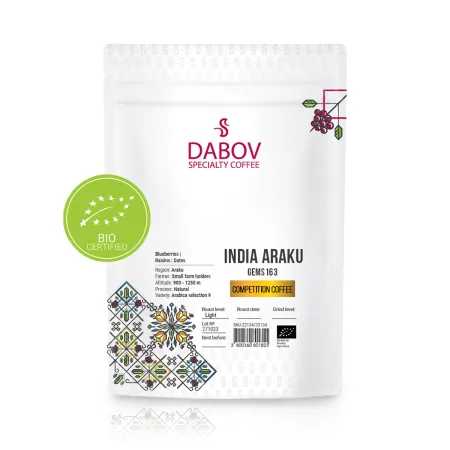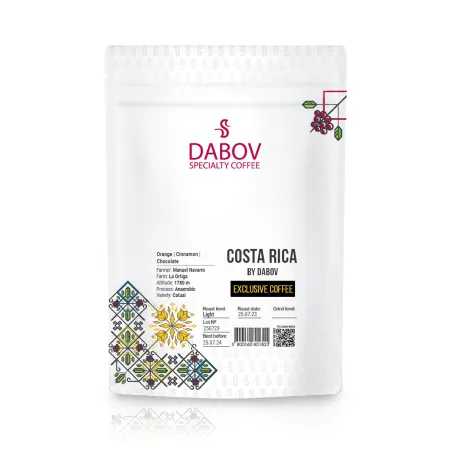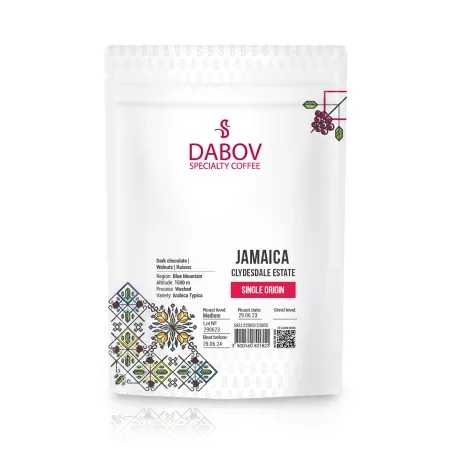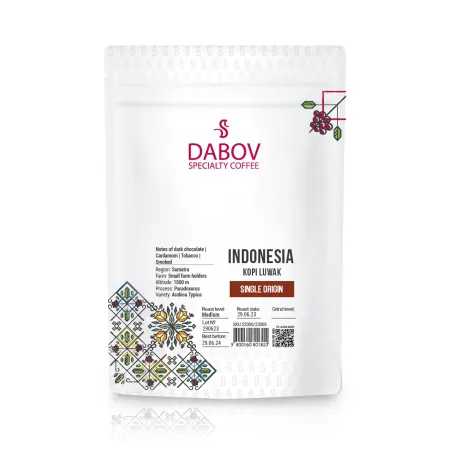How Roasting Temperature and Time Influence Coffee Taste
Unlock the secrets of coffee roasting with our comprehensive guide! Discover how roasting temperature and time can transform your cup of coffee. In 'How Roasting Temperature and Time Influence Coffee Taste,' we explore the intricate relationship between roasting processes and flavor profiles. Learn the science behind flavor development, the impact of different roasting techniques, and practical tips for home roasters. Whether you're a coffee novice or a seasoned aficionado, this article will equip you with the knowledge needed to elevate your brewing experience. Get ready to experiment and find your perfect roast!
Coffee, a beverage cherished by millions worldwide, owes much of its complex flavor profile to the art and science of roasting. The process of transforming raw, green coffee beans into the aromatic brown beans we grind for our daily brew is a delicate dance of temperature and time. These two factors play a crucial role in developing the unique taste characteristics that coffee enthusiasts seek. In this comprehensive exploration, we'll delve deep into the intricacies of coffee roasting, examining how temperature and time interact to create the vast spectrum of flavors found in your cup.
1. Understanding Coffee Roasting
1.1 What is Coffee Roasting?
Coffee roasting is a thermal process that transforms the physical and chemical properties of green coffee beans into roasted coffee products. This practice dates back centuries, with evidence suggesting that coffee was first roasted in the 13th century in Arabia. Initially, coffee beans were roasted in pans over open fires, a method that persisted until the 19th century when industrial roasting machines were developed.
The roasting process is both an art and a science, requiring a deep understanding of the bean's composition and the chemical reactions that occur during heating. As the beans are exposed to high temperatures, they undergo a series of complex changes. Water evaporates, sugars caramelize, and various chemical reactions occur, leading to the development of over 800 aromatic compounds that contribute to coffee's distinctive flavor and aroma.
Modern coffee roasting has evolved into a highly controlled process, utilizing advanced technology to manipulate variables such as temperature, time, and airflow. This evolution has allowed roasters to achieve unprecedented levels of precision, resulting in a wider range of flavor profiles and consistently high-quality coffee.
1.2 The Role of Roasting in Coffee Flavor Development
Roasting plays a pivotal role in coffee flavor development, acting as the catalyst that unlocks the potential hidden within each green coffee bean. The process is responsible for the transformation of relatively flavorless green coffee beans into the complex, aromatic, and flavorful product we know as roasted coffee.
During roasting, a series of chemical reactions occur that significantly alter the bean's composition. One of the most important is the Maillard reaction, a complex series of chemical interactions between amino acids and reducing sugars. This reaction is responsible for the production of hundreds of different aromatic compounds and contributes to the brown color of roasted coffee.
As the beans heat up, they lose moisture and increase in size. This expansion causes the cellular structure of the bean to change, affecting how flavors are extracted during brewing. Simultaneously, organic acids within the bean break down, reducing overall acidity and allowing other flavor compounds to become more prominent.
The development of oils is another crucial aspect of the roasting process. As the beans reach higher temperatures, oils begin to migrate from the interior of the bean to the surface. These oils carry many of the coffee's flavors and aromas, contributing significantly to the final taste profile.
The extent to which these changes occur is largely dependent on the roasting temperature and time. Lighter roasts, achieved through shorter roasting times at lower temperatures, tend to preserve more of the bean's original characteristics, including its acidity and origin-specific flavors. Darker roasts, on the other hand, are the result of longer roasting times at higher temperatures, leading to more pronounced caramelization and the development of bitter, roasted flavors.
2. The Science of Roasting Temperature
2.1 Defining Coffee Roasting Temperature
Coffee roasting temperature refers to the heat applied to the coffee beans during the roasting process. It is typically measured in degrees Fahrenheit or Celsius, with most commercial roasters operating between 370°F to 540°F (188°C to 282°C). The temperature is not static throughout the roasting process but follows a carefully controlled curve that changes over time.
Roasters use various methods to measure and control temperature. Some rely on the air temperature within the roasting chamber, while others focus on the bean temperature itself. Advanced roasting machines often employ multiple temperature probes to provide a comprehensive view of the thermal environment.
It's important to note that the temperature experienced by the beans is not always identical to the air temperature in the roaster. Factors such as bean density, moisture content, and the rate of heat transfer can all influence how quickly the beans absorb heat and reach specific temperature milestones.
2.2 How Temperature Influences Coffee Taste
Roasting temperature has a profound impact on coffee taste, influencing everything from acidity and sweetness to bitterness and body. The temperature at which beans are roasted determines which chemical reactions occur and to what extent, directly shaping the final flavor profile.
At lower roasting temperatures (around 370°F to 400°F), the beans retain more of their original characteristics. This results in coffees with higher acidity, more pronounced fruit notes, and a lighter body. As temperatures increase, sugars begin to caramelize more intensely, leading to the development of sweeter, nuttier flavors.
When temperatures reach the range of 410°F to 430°F, the Maillard reaction accelerates, producing a wide array of complex flavors and aromas. This is where many of the chocolate, caramel, and toasted nut flavors associated with medium roasts develop.
At higher temperatures (440°F and above), the beans begin to carbonize, leading to the development of bitter, smoky flavors characteristic of dark roasts. The body of the coffee also increases as more oils are brought to the surface of the bean.
Here's a breakdown of flavor profiles at various temperature ranges:
- 370°F - 400°F: High acidity, pronounced fruit notes, floral aromas, tea-like body
- 400°F - 415°F: Balanced acidity, caramel sweetness, nutty flavors, medium body
- 415°F - 435°F: Reduced acidity, dark chocolate notes, full body
- 435°F - 445°F: Low acidity, bitter-sweet flavors, smoky notes, very full body
- 445°F+: Minimal acidity, pronounced bitterness, thin body (due to oil loss)
2.3 Optimal Roasting Temperatures for Different Beans
Different coffee beans require different roasting temperatures to bring out their best qualities. Factors such as the bean's origin, variety, processing method, and desired flavor profile all play a role in determining the optimal roasting temperature.
For example, high-grown Arabica beans from regions like Ethiopia or Kenya often benefit from lower roasting temperatures (around 390°F - 410°F) to preserve their delicate floral and fruit notes. These beans are typically dense and can withstand the heat without quickly burning or over-roasting.
Central American coffees, known for their balanced profiles, often shine when roasted at slightly higher temperatures (400°F - 425°F). This range allows for the development of their characteristic nutty and chocolate notes while maintaining a pleasant acidity.
Brazilian coffees, which are often naturally processed and have a nuttier, sweeter profile, can handle even higher temperatures (415°F - 435°F). This helps to accentuate their body and bring out rich, caramel-like flavors.
Robusta beans, known for their higher caffeine content and stronger flavor, are often roasted at higher temperatures (430°F - 450°F) to reduce their inherent bitterness and bring out their full body.
It's crucial to note that these are general guidelines, and the exact optimal temperature can vary based on the specific batch of beans and the roaster's goals. Experienced roasters often experiment with different temperature profiles to find the sweet spot that best highlights each bean's unique characteristics.
3. The Impact of Roasting Time
3.1 Defining Coffee Roasting Time
Coffee roasting time refers to the duration that coffee beans are subjected to heat during the roasting process. This period typically ranges from 8 to 20 minutes, depending on the roasting method and desired outcome. However, it's essential to understand that roasting time is not merely a matter of setting a timer and waiting for it to expire.
Roasting time is intimately connected with the rate of rise (RoR) in temperature. The RoR is the speed at which the bean temperature increases over time. A skilled roaster carefully manages this rate throughout the roasting process, adjusting heat input to control the progression of flavor development.
The concept of roasting time also encompasses several critical events that occur during the roast. These include the "yellowing" phase when beans lose their green color, the "first crack" when beans expand and make an audible popping sound, and the "second crack" which occurs in darker roasts.
Understanding and controlling roasting time is crucial because it directly impacts the chemical reactions occurring within the beans. Too short a roasting time can result in underdeveloped flavors, while too long can lead to over-roasted, bitter coffee.
3.2 Evolution of Coffee Taste During Roasting
The evolution of coffee taste during roasting is a fascinating journey of chemical transformations. As the beans progress through different stages of the roast, their flavor profile changes dramatically.
In the early stages of roasting, as the beans heat up and begin to dry out, they take on a grassy, hay-like aroma. This is due to the breakdown of chlorophyll and the release of water vapor. At this point, the beans have little resemblance to the coffee we know.
As the roast progresses and temperatures rise, the beans begin to yellow and then turn light brown. During this phase, the beans start to develop some sweetness as sugars begin to caramelize. However, at this stage, the coffee would still taste quite sour and unpalatable if brewed.
The first major flavor milestone occurs at the "first crack," typically around 385°F (196°C). This is when the beans expand rapidly, releasing built-up gases and moisture with an audible crack. At this point, the coffee begins to develop its characteristic flavors. Light roasts are often stopped shortly after first crack to preserve bright, acidic notes and origin-specific flavors.
Between first and second crack, the beans continue to darken, and flavors become more balanced. This is where medium roasts are typically achieved, offering a harmony between acidity, sweetness, and body.
The "second crack," occurring around 435°F (224°C), marks the beginning of dark roast territory. At this stage, oils start to migrate to the surface of the bean, and flavors become more robust and less acidic. Roasts taken beyond second crack develop increasingly bitter and carbonized flavors.
3.3 Recommended Roasting Times for Different Roast Levels
The recommended roasting times for different roast levels can vary based on factors such as bean type, roasting equipment, and batch size. However, here are some general guidelines:
Light Roasts: These are typically achieved between 9-11 minutes of total roast time. The goal is to stop the roast shortly after first crack, usually around 385°F-400°F (196°C-204°C). This preserves the bean's original characteristics, resulting in bright, acidic coffees with pronounced origin flavors.
Medium Roasts: Medium roasts usually require 11-13 minutes of roast time. The roast is typically stopped between first and second crack, around 410°F-428°F (210°C-220°C). This results in a balanced cup with a mix of origin flavors and roast-induced caramel sweetness.
Dark Roasts: Dark roasts generally take 13-15 minutes or more. These roasts are taken to or beyond second crack, usually around 435°F-450°F (224°C-232°C). The extended roast time results in bold, bitter flavors with a heavy body and low acidity.
It's crucial to note that these times are approximate and can vary significantly based on the roasting method and equipment. For instance, air roasters tend to have shorter overall roast times compared to drum roasters due to their more efficient heat transfer.
Moreover, the rate at which temperature increases during the roast (Rate of Rise) is often more important than the total roast time. A skilled roaster will adjust the heat application throughout the roast to control the rate of flavor development, rather than simply aiming for a specific end time.
4. Interplay Between Roasting Temperature and Time
4.1 The Optimal Balance: Time vs. Temperature
The relationship between roasting time and temperature is complex and interdependent. Finding the optimal balance between these two variables is crucial for achieving the desired flavor profile in coffee.
Generally speaking, higher temperatures require shorter roasting times, while lower temperatures necessitate longer roasting times. However, it's not as simple as just increasing temperature to shorten roast time or vice versa. The rate at which heat is applied (Rate of Rise) and how it changes throughout the roast significantly impacts flavor development.
For example, a rapid increase in temperature at the beginning of the roast followed by a gradual slowdown can result in a coffee with bright acidity and clear origin flavors. Conversely, a slow start followed by a rapid temperature increase towards the end can produce a coffee with more body and caramel sweetness.
The concept of "thermal momentum" is also crucial in understanding this interplay. As beans absorb heat, they continue to roast even after the heat source is removed. This means that the final moments of the roast are critical, and slight variations in time or temperature can have significant impacts on the final flavor.
Roasters often use a combination of time and temperature adjustments to fine-tune their roasts. For instance, they might use a higher initial temperature to speed up the drying phase, then reduce heat to slow down the roast and allow for more even flavor development.
4.2 Roasting Techniques for Flavor Control
Various roasting techniques can be employed to control flavor development through the manipulation of time and temperature. Here are some common approaches:
- Profile Roasting: This technique involves carefully planning and executing a specific time-temperature curve throughout the roast. Roasters might use different heat application rates at various stages to highlight certain flavor characteristics.
- Stretch and Compress: This method involves extending or shortening specific phases of the roast. For example, "stretching" the time between first and second crack can enhance sweetness and complexity in medium roasts.
- Step Roasting: This approach involves distinct temperature changes at specific points in the roast. It can be used to emphasize certain flavor notes or to manage the roast of particularly dense or large beans.
- Drum vs. Air Roasting: The choice of roasting equipment also impacts flavor control. Drum roasters provide more conductive heat and generally allow for longer roast times, which can result in more body and sweetness. Air roasters, with their more efficient heat transfer, can produce brighter, cleaner flavors but may sacrifice some body.
- Batch Size Manipulation: Adjusting the batch size can affect how quickly beans heat up and cool down. Smaller batches generally allow for more precise control but may be less consistent, while larger batches provide more thermal stability but less agility in adjusting the roast.
Each of these techniques requires a deep understanding of how time and temperature interact to influence flavor. Mastering these methods allows roasters to consistently produce coffee with specific flavor profiles, tailored to their customers' preferences or to highlight the unique characteristics of different coffee origins.
5. Coffee Flavor Guide According to Roast Profiles
5.1 Flavor Characteristics of Light Roasts
Light roasts, achieved through shorter roasting times at lower temperatures, are known for their bright, complex flavors that closely reflect the coffee's origin. These roasts typically reach an internal bean temperature of 356°F to 401°F (180°C to 205°C) and are stopped shortly after the first crack.
Flavor Profile:
- High Acidity: Light roasts preserve much of the coffee's natural acids, resulting in a bright, vibrant cup. This can manifest as citrusy, wine-like, or even floral notes.
- Fruit-Forward: Many light roasts exhibit pronounced fruit flavors, ranging from berries and stone fruits to tropical notes like pineapple or mango.
- Floral Aromas: Delicate floral notes such as jasmine, bergamot, or honeysuckle are often present in light roasts, especially in certain African coffees.
- Tea-like Body: The body of light roasts tends to be lighter and more tea-like compared to darker roasts.
- Origin-Specific Flavors: Light roasts are prized for their ability to showcase the unique flavor characteristics of different coffee origins and varietals.
- Subtle Sweetness: While not as sweet as medium roasts, light roasts can exhibit delicate honey or raw sugar notes.
Light roasts are often favored by coffee connoisseurs and third-wave coffee shops for their ability to highlight the nuanced flavors of high-quality, single-origin coffees. However, their higher acidity and lighter body may not appeal to all coffee drinkers, especially those accustomed to more traditional, darker roasts.
5.2 Flavor Characteristics of Medium Roasts
Medium roasts represent a balance between the bright, origin-specific flavors of light roasts and the more developed, caramelized notes of dark roasts. These roasts typically reach an internal bean temperature of 410°F to 428°F (210°C to 220°C) and are usually stopped between the first and second crack.
Flavor Profile:
- Balanced Acidity: Medium roasts retain some of the coffee's natural acidity, but it's less pronounced than in light roasts. This results in a pleasantly tangy quality that doesn't overwhelm the palate.
- Increased Sweetness: As sugars in the coffee beans caramelize more fully, medium roasts often exhibit a noticeable increase in sweetness compared to light roasts.
- Nutty and Chocolatey Notes: Many medium roasts develop flavors reminiscent of nuts (like almonds or hazelnuts) and chocolate (particularly milk chocolate).
- Caramel Flavors: The increased caramelization in medium roasts often results in distinct caramel or toffee-like flavors.
- Fuller Body: Medium roasts typically have a fuller, more syrupy body compared to light roasts, but not as heavy as dark roasts.
- Complex Aroma: The aroma of medium roasts is often described as rich and fragrant, with a good balance between roasted notes and origin characteristics.
Medium roasts are popular for their versatility and approachability. They offer a harmonious blend of acidity, sweetness, and body that appeals to a wide range of coffee drinkers. This roast level is often chosen for espresso blends and is a common choice for daily drinking coffee in many parts of the world.
5.3 Flavor Characteristics of Dark Roasts
Dark roasts are achieved through longer roasting times at higher temperatures, typically reaching an internal bean temperature of 430°F to 450°F (221°C to 232°C) or beyond. These roasts are taken to or past the second crack, resulting in beans with a dark brown, almost black appearance and an oily surface.
Flavor Profile:
- Low Acidity: The extended roasting process breaks down many of the coffee's acids, resulting in a much less acidic cup compared to lighter roasts.
- Bitter-Sweet Flavor: Dark roasts are characterized by a pronounced bitterness, often described as bittersweet. This is due to the extensive caramelization and carbonization of sugars.
- Roasted Notes: Flavors reminiscent of dark chocolate, tobacco, and sometimes even charred or smoky notes are common in dark roasts.
- Full Body: Dark roasts typically have a heavy, full body due to the oils that have been brought to the surface of the bean during roasting.
- Reduced Origin Flavors: Many of the origin-specific flavors are overshadowed by the roast flavors in dark roasts. This makes dark roasts more consistent across different coffee origins.
- Strong Aroma: Dark roasts produce a strong, often pungent aroma that many associate with "classic" coffee smell.
While dark roasts have less complexity and variety in their flavor profiles compared to lighter roasts, they are prized for their bold, intense flavors. They stand up well to the addition of milk or cream, making them popular choices for espresso-based drinks and traditional drip coffee.
However, it's important to note that there's a fine line between a well-executed dark roast and an over-roasted coffee. Roasting too dark can result in burnt, ashy flavors that overwhelm any remaining positive characteristics of the coffee.
6. Practical Tips for Home Roasters
6.1 Equipment Needed for Home Roasting
For those interested in roasting coffee at home, several equipment options are available, ranging from simple, low-cost methods to more advanced setups:
- Pan or Wok: The most basic method involves roasting coffee in a pan or wok over a heat source. While this method offers little control, it's an accessible way to start.
- Popcorn Popper: An air popcorn popper can be repurposed for coffee roasting. This method provides more even heat distribution than pan roasting but still offers limited control.
- Purpose-Built Home Roasters: These come in various types:
- Fluid Bed Roasters: Use hot air to roast coffee, similar to popcorn poppers but with more control.
- Drum Roasters: Rotate beans in a drum over a heat source, mimicking commercial roasters on a smaller scale.
- Heat Gun and Bowl: This DIY method involves using a heat gun to roast beans in a metal bowl, offering good control at a relatively low cost.
- Thermometer: A good thermometer is crucial for monitoring bean temperature. Infrared thermometers are popular for their ease of use.
- Cooling System: Quickly cooling beans after roasting is important. A simple setup might involve two colanders and a fan.
- Green Coffee Beans: Of course, you'll need a supply of green (unroasted) coffee beans.
6.2 Monitoring Roasting Temperature and Time
Accurate monitoring of temperature and time is crucial for achieving consistent, high-quality roasts. Here are some tips:
- Use Multiple Temperature Measurements: If possible, monitor both the environmental temperature (air temperature in the roaster) and the bean temperature. This gives a more complete picture of the roasting process.
- Keep Detailed Logs: Record the time and temperature at key points during each roast, such as the start of yellowing, first crack, and end of roast. This allows you to replicate successful roasts and learn from less successful ones.
- Use Roast Profiling Software: For more advanced setups, software like Artisan or RoastLogger can help you track and visualize your roast profiles in real-time.
- Pay Attention to Rate of Rise (RoR): The rate at which the bean temperature increases is often more important than the absolute temperature. Aim for a gradually decreasing RoR throughout the roast.
- Listen and Look: While temperature and time are important, also use your senses. Listen for the cracks and observe the color changes in the beans.
- Consistency in Batch Size: Try to keep your batch sizes consistent, as this affects how quickly the beans heat up and cool down.
6.3 Experimentation and Personal Taste
Developing your roasting skills is a journey of experimentation and discovery. Here are some tips to guide your exploration:
- Start with a Standard Profile: Begin with a basic roast profile and make small adjustments to see how they affect the flavor.
- Single-Variable Experiments: When experimenting, change only one variable at a time (e.g., end temperature, total roast time, or rate of rise) to clearly understand its impact.
- Cup Your Roasts: Regularly taste your roasts, ideally 24-48 hours after roasting when the flavors have had time to develop. Take notes on what you like and dislike.
- Explore Different Origins: Different coffee origins respond differently to roasting. Experiment with beans from various regions to understand how origin characteristics interact with roast profiles.
- Learn from the Community: Join online forums or local coffee groups to share experiences and learn from other home roasters.
- Be Patient: Developing your palate and roasting skills takes time. Don't be discouraged by initial results that don't meet your expectations.
- Trust Your Taste: While there are general guidelines, ultimately, the best roast is the one you enjoy most. Don't be afraid to deviate from conventional wisdom if you prefer the results.
Remember, home roasting is as much an art as it is a science. While understanding the principles of how temperature and time affect coffee flavor is crucial, there's no substitute for hands-on experience and a willingness to experiment.
Conclusion
The interplay between roasting temperature and time is at the heart of coffee's complex and varied flavor profiles. From the bright, acidic notes of a light roast to the bold, bittersweet flavors of a dark roast, every step in the roasting process contributes to the final taste in your cup.
Understanding these variables allows both professional roasters and home enthusiasts to craft coffees that highlight the unique characteristics of different bean origins or create consistent blends that appeal to a wide range of palates. The science of coffee roasting continues to evolve, with new technologies and techniques constantly emerging to give roasters even greater control over the process.
However, it's important to remember that while temperature and time are crucial factors, they are part of a larger picture that includes bean quality, origin, processing method, and brewing technique. The journey from seed to cup is a long and complex one, with roasting serving as a critical link in bringing out the best in each coffee bean.
Whether you're a coffee professional fine-tuning your roast profiles or a home enthusiast starting to explore the world of roasting, the key is to approach the process with curiosity, patience, and a willingness to experiment. By understanding the fundamental principles of how temperature and time influence coffee taste, you're well-equipped to begin your own exploration into the fascinating world of coffee roasting.
So, grab some green beans, fire up your roaster, and start your journey. With practice and attention to detail, you'll soon be creating roasts that perfectly suit your personal taste preferences. Remember, the perfect roast is the one that tastes best to you. Happy roasting!
References
- Illy, A., & Viani, R. (2005). Espresso Coffee: The Science of Quality. Academic Press.
- Schenker, S., & Rothgeb, T. (2017). The Roast - Deconstructed. Roast Magazine.
- Hoffmann, J. (2018). The World Atlas of Coffee: From Beans to Brewing - Coffees Explored, Explained and Enjoyed. Mitchell Beazley.
- Yeretzian, C., Jordan, A., & Lindinger, W. (2003). Time-resolved headspace analysis by proton-transfer-reaction mass-spectrometry. International Journal of Mass Spectrometry, 223-224, 115-139.
- Baggenstoss, J., Poisson, L., Kaegi, R., Perren, R., & Escher, F. (2008). Coffee Roasting and Aroma Formation: Application of Different Time−Temperature Conditions. Journal of Agricultural and Food Chemistry, 56(14), 5836-5846.
- Lee, L. W., Cheong, M. W., Curran, P., Yu, B., & Liu, S. Q. (2015). Coffee fermentation and flavor – An intricate and delicate relationship. Food Chemistry, 185, 182-191.
- Specialty Coffee Association. (2021). The Coffee Roaster's Companion. SCA.
- Rao, S. (2014). The Coffee Roaster's Companion. Scott Rao.
- Giacalone, D., Degn, T. K., Yang, N., Liu, C., Fisk, I., & Münchow, M. (2019). Common roasting defects in coffee: Aroma and flavor deviations. Journal of Sensory Studies, 34(2), e12489.
- Franca, A. S., Oliveira, L. S., Oliveira, R. C., Agresti, P. C., & Augusti, R. (2009). A preliminary evaluation of the effect of processing temperature on coffee roasting degree assessment. Journal of Food Engineering, 92(3), 345-352.



